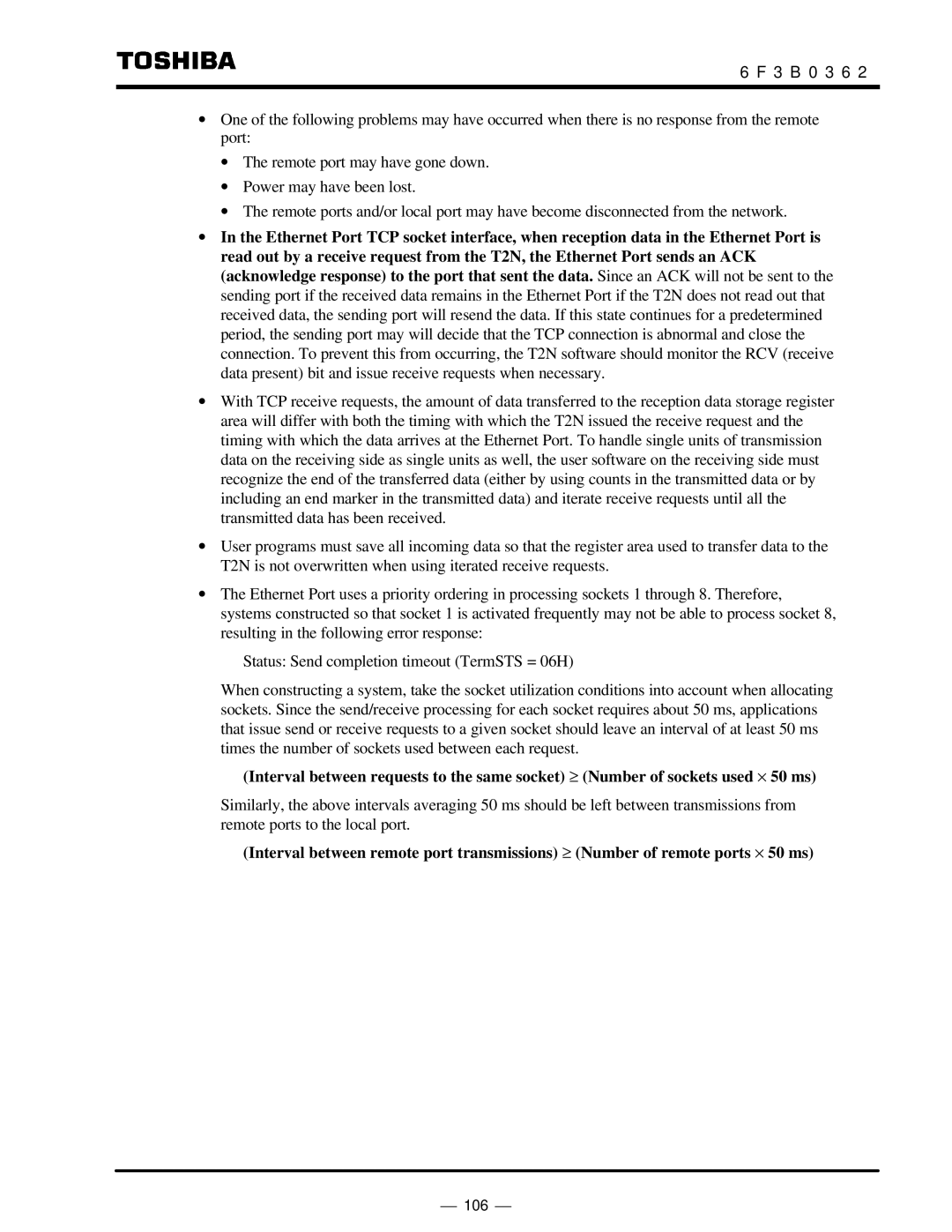
6 F 3 B 0 3 6 2
∙One of the following problems may have occurred when there is no response from the remote port:
∙The remote port may have gone down.
∙Power may have been lost.
∙The remote ports and/or local port may have become disconnected from the network.
∙In the Ethernet Port TCP socket interface, when reception data in the Ethernet Port is read out by a receive request from the T2N, the Ethernet Port sends an ACK (acknowledge response) to the port that sent the data. Since an ACK will not be sent to the sending port if the received data remains in the Ethernet Port if the T2N does not read out that received data, the sending port will resend the data. If this state continues for a predetermined period, the sending port may will decide that the TCP connection is abnormal and close the connection. To prevent this from occurring, the T2N software should monitor the RCV (receive data present) bit and issue receive requests when necessary.
∙With TCP receive requests, the amount of data transferred to the reception data storage register area will differ with both the timing with which the T2N issued the receive request and the timing with which the data arrives at the Ethernet Port. To handle single units of transmission data on the receiving side as single units as well, the user software on the receiving side must recognize the end of the transferred data (either by using counts in the transmitted data or by including an end marker in the transmitted data) and iterate receive requests until all the transmitted data has been received.
∙User programs must save all incoming data so that the register area used to transfer data to the T2N is not overwritten when using iterated receive requests.
∙The Ethernet Port uses a priority ordering in processing sockets 1 through 8. Therefore, systems constructed so that socket 1 is activated frequently may not be able to process socket 8, resulting in the following error response:
Status: Send completion timeout (TermSTS = 06H)
When constructing a system, take the socket utilization conditions into account when allocating sockets. Since the send/receive processing for each socket requires about 50 ms, applications that issue send or receive requests to a given socket should leave an interval of at least 50 ms times the number of sockets used between each request.
(Interval between requests to the same socket) ≥ (Number of sockets used × 50 ms)
Similarly, the above intervals averaging 50 ms should be left between transmissions from remote ports to the local port.
(Interval between remote port transmissions) ≥ (Number of remote ports × 50 ms)
